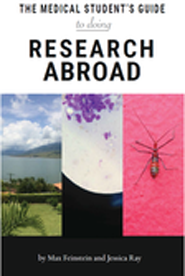Roe Green Global Health Pathway

We have a long and outstanding tradition in global health for research, education and clinical practice. Interest in overseas medical experiences continues to increase. Admittance into this pathway allows you to be eligible for a certificate in Global Health from the American Society for Tropical Medicine and Hygiene (ASTMH). Clinical training in this pathway is similar to the Categorical Pathway. We recommend our trainees use some of the electives for global experiences.
Length of training: three years
Setting: University Hospitals Cleveland Medical Center, Louis Stokes Cleveland Veteran Affairs Medical Center and various global health centers
Description and Defining Characteristics
Many medical concerns transcend the limits of our own society, so it is important to respond to the global challenge to extend the benefits of modern medicine. We have a long and outstanding tradition in global health research, education and clinical practice. Interest in overseas medical experiences has been increasing. Many of our residents have taken advantage of our collaborations to spend time in healthcare facilities in a variety of locations across the globe. Some work these experiences into the categorical track while others join our Global Health Pathway.
The Global Health Pathway has one to two slots each year. Admittance into this track allows the candidate to be eligible for a certificate in Global Health from the ASTMH.
Clinical Training Abroad for International Experiences
Clinical training in the pathway is very similar to the Categorical Pathway; there is the same number of ward, ICU and ambulatory months. Although total elective time is the same, it is anticipated that residents in the Global Health Pathway will use some of their elective time abroad. Scheduling is flexible, and it is possible to use most of elective time consecutively to maximize global experiences.
Research Initiatives
The Division of Infectious Diseases and HIV Medicine has several projects, primarily based in Uganda. Research efforts include HIV and tuberculosis and range from bench science to translational projects to clinical trials and epidemiological studies. Projects are done under the auspices of The Case Center for AIDS Research and the Tuberculosis Research Unit. Collaborations in India are under development.
Another important resource in the School of Medicine is the Center for Global Health and Diseases (CGHD). Areas of research in the CGHD include malaria, filariasis, schistosomiasis and other tropical diseases. Collaborations exist in Kenya, Papua New Guinea, Cote d'Ivoire and Brazil. The Center is also the current home for the editorial offices of the American Journal of Tropical Medicine and Hygiene (AJTMH).
Example Schedule
The breakdown of the schedule for residents on the Global Health Pathway is the same as that of our categorical residents. However, there is more flexibility in that elective time can be grouped together to allow a more meaningful experience abroad.
International Scholarly Activity Funding
The Department of Medicine, with funds from The Roe Green Center for Travel Medicine and Global Health, will provide an opportunity for medical residents and fellows to undertake clinical and scholarly activities internationally in resource-limited settings.
The Medical Student's Guide to Doing Research Abroad
 Title: Medical Student's Guide to Doing Research Abroad
Title: Medical Student's Guide to Doing Research Abroad
Authors: Max M. Feinstein and Jessica Ray
Description: This guide is the culmination of the experiences of two medical students who spent a combined total of nearly four years conducting research and pursuing clinical rotations abroad. Topics covered include the following:
- Cultural and language considerations
- Financing a trip
- Health and safety concerns
- Ideas for taking advantage of time abroad
- Identifying host institutions


